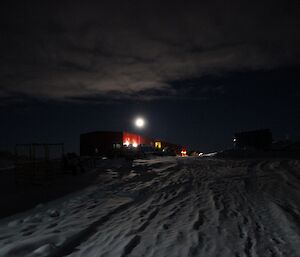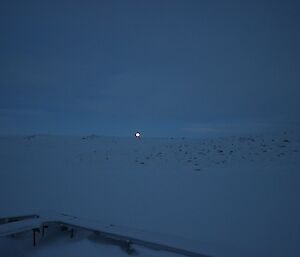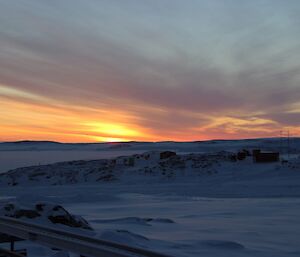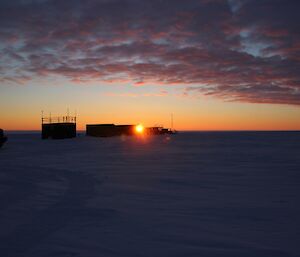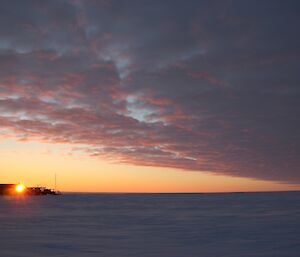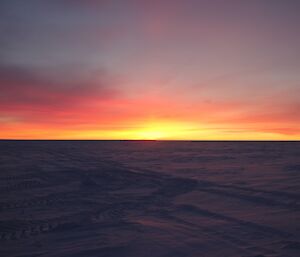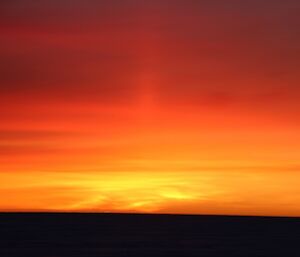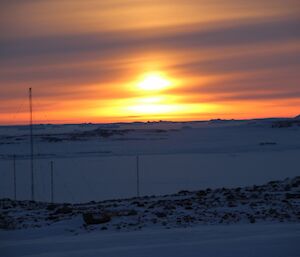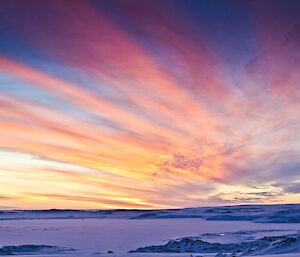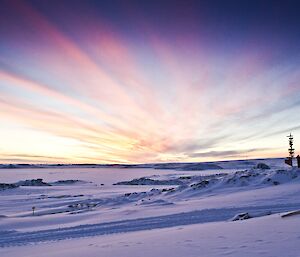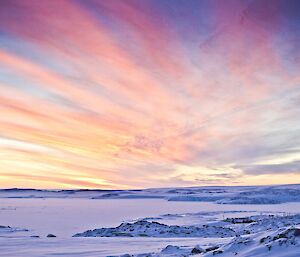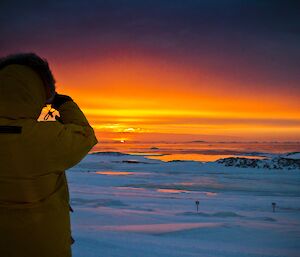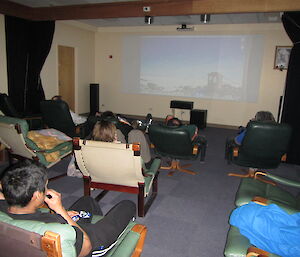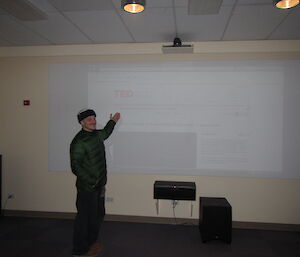As winter is here and the shortest day of the year is rapidly approaching, we are losing about seven minutes of day light per day. The walk to work in the morning presents some new challenges as overnight winds can shift snow creating new blizzard trails that weren’t there the day before. To add to that, the light level at this time of the day, which is around eight in the morning, changes as much as the weather. Some days we have bright moonlight to total cloud cover and extreme darkness, or cloud that is covering all the sky except some horizon areas allowing some reflective light. This can make surface definition difficult. This does create some entertainment as you watch some slide off the snow mounds and fall over.
On Monday the 10th sunrise was at 11:09am and sunset was 02:04pm. With the right weather conditions and cloud cover, we get some incredibly spectacular scenes. The sky can ‘colour-up’ for a couple of hours before and after the sun rises and sets and can colour close to 360 degrees. To capture these in a photo can be a challenge as your camera must be with you at the right time or you need to be in a good spot as the sun rises and falls: it doesn’t wait for you and the sky continues to change.
Mark B.



